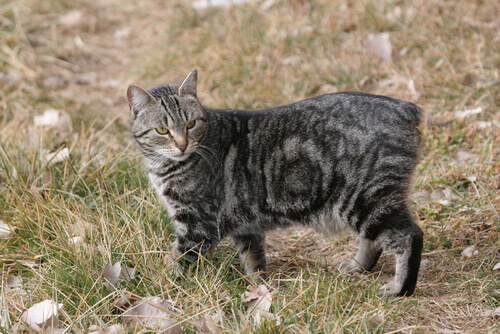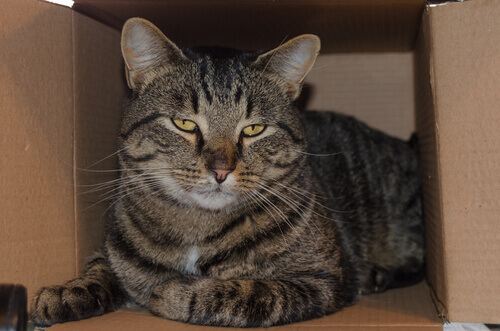Spina Bifida in Cats

Today we bring you information about a congenital malformation of the spinal cord that can affect cats with varying degrees of severity. This problem causes the vertebrae to not develop normally, which can leave the spinal cord exposed. Here, we’ll tell you what you need to know about spina bifida in cats.
A birth defect
This malformation, which occurs during embryonic development, also occurs in humans and dogs. In the case of domestic felines, it has a high incidence in tailless Manx cats.
Spina bifida in cats can manifest itself severely when the animal’s spinal cord is exposed. But vets can also discover it by chance when the cat is x-rayed for other reasons.
Between these extremes, there are variations that affect to a greater or lesser degree a cats’ quality of life. Therefore, it’s important for you to learn to identify them.
We’ll tell you more about spina bifida in cats. This congenital malformation of the spine can cause cats problems of varying degrees of severity.
Signs of spina bifida in cats
The lower part of the spine is the part most affected by this malformation. However, the problem can manifest itself in any part of the spine. Usually, several vertebrae are involved, but in mild cases, only one is involved.

In severe cases, when the spinal cord is exposed at birth, animals are often predisposed to meningitis or an inflammation of the spinal cord membranes. Unfortunately, these complications worsen the prognosis, leading vets to advise euthanizing the animal.
If spina bifida isn’t detected at birth, it’s very likely that symptoms will start appearing as soon as the kitten takes its first steps. Some symptoms of a kitten with this condition are:
- Weakness in the hind legs
- Unsteady gait
- Urinary and/or fecal incontinence
- Insensitivity or pain in the affected areas
- Paralysis
Diagnosis, treatment and prevention
Common x-ray studies can confirm a diagnosis of spina bifida in cats. Additionally, other studies can include:
- Myelograms
- Contrast radiography
- Computer tomography (CT) scans
- Magnetic resonance imaging (MRI)
In certain cases, doctors may resort to restorative surgery. While this ensures that the spinal cord is no longer exposed through the skin, it’s unlikely that they will be able to completely reconstruct the affected vertebrae.
Nevertheless, there’s no way to prevent spina bifida in cats. The only option would be to employ genetic studies in order to prevent affected individuals and their first-degree relatives from reproducing.
Manx breed and spina bifida
Manx cats, which are usually born without a tail —or only with part of it— don’t usually have mobility problems. However, if they have defective genes, they may develop problems in their spine, such as spina bifida.

This is why we can see these beautiful kittens adopting abnormal postures. In many cases, they feel pain or suffer accidental trauma due to insensitive nerves.
Fortunately, most breeders are taking extreme care to ensure that Manx cats don’t develop this health problem.
In any case, regardless of breed, the important thing is to consult the vet for the best way to provide quality of life to cats affected by this congenital malformation.